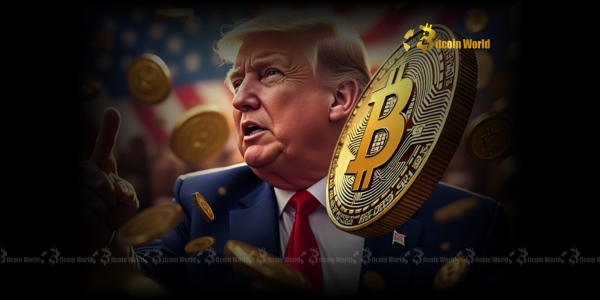Bitcoin’s Historic Ascent: How US Fiscal Policy Fuels Unprecedented Growth
0
0

The cryptocurrency world is buzzing! Bitcoin (BTC) has once again defied expectations, smashing through previous records to hit an unprecedented all-time high of $118,800. This isn’t just another price pump; it’s a monumental moment driven by a powerful confluence of factors, chief among them being sustained institutional ETF inflows and strategic US fiscal policy decisions. If you’ve been watching the crypto market, you know this kind of milestone signals a significant shift in how traditional finance views digital assets.
Understanding US Fiscal Policy and Its Impact on Bitcoin
At the heart of Bitcoin’s latest surge lies the intricate dance between government spending and market dynamics. According to insights from The Block, the passage of what’s been colloquially termed the “Big Beautiful Bill” has played a pivotal role. But what exactly does this mean for the world’s leading cryptocurrency?
What is Fiscal Policy?
In simple terms, fiscal policy refers to the government’s use of spending and taxation to influence the economy. When governments spend more than they collect in taxes, they run a deficit, often funded by issuing more debt or, indirectly, by increasing the money supply. This expansionary policy aims to stimulate economic growth, but it can also lead to concerns about inflation and the devaluation of fiat currencies.
The “Big Beautiful Bill” and its Implications
While specific details of the “Big Beautiful Bill” remain under wraps, its very existence points to a significant expansion of government spending. Historically, large-scale fiscal stimulus packages, particularly those involving substantial debt issuance, have prompted investors to seek out alternative assets that can serve as a hedge against potential currency depreciation. Nicolai Søndergaard, a seasoned analyst at Nansen, rightly points out that such US policy moves are actively creating a more favorable environment for Bitcoin. This isn’t a coincidence; it’s a direct reaction to the perceived long-term implications of expansive monetary and fiscal policies.
Consider the following effects of robust fiscal policy:
- Increased Money Supply: Large government spending often necessitates an increase in the money supply, which can dilute the purchasing power of existing currency.
- Inflationary Concerns: More money chasing the same amount of goods and services can lead to inflation, eroding savings held in traditional fiat currencies.
- Search for Value Storage: Investors look for assets with limited supply and decentralized characteristics to preserve wealth.
The Game-Changing Role of Bitcoin ETF Inflows
Beyond fiscal policy, the relentless flow of capital into Bitcoin Exchange-Traded Funds (ETFs) has been a primary catalyst for its price action. These investment vehicles have revolutionized how traditional investors can gain exposure to Bitcoin, bridging the gap between mainstream finance and the nascent digital asset space.
Demystifying Bitcoin ETFs
A Bitcoin ETF allows investors to buy shares that represent ownership of Bitcoin without directly holding the cryptocurrency themselves. This simplifies the investment process, making it accessible to a much wider audience, including institutional investors, retirement funds, and retail investors who prefer regulated investment products.
Why ETF Inflows Matter for the Crypto Market
The sustained influx of capital into these ETFs signifies a profound shift in institutional adoption. When major financial players and large investment funds pour billions into these products, it has several critical implications for the entire crypto market:
- Validation and Legitimacy: ETF approval and subsequent inflows lend significant credibility to Bitcoin as a legitimate asset class, dispelling previous skepticism.
- Increased Liquidity: More capital flowing into the market improves liquidity, making it easier to buy and sell Bitcoin without significant price impact.
- Broader Market Access: ETFs open the doors for a vast pool of traditional investors who previously couldn’t or wouldn’t engage directly with cryptocurrency exchanges. This expanded investor base creates sustained buying pressure.
- Supply Shock Potential: As ETFs accumulate vast amounts of Bitcoin to back their shares, it reduces the available supply on exchanges, further driving up prices given constant or increasing demand.
Bitcoin: A Digital Hedge Against Monetary Debasement?
The narrative of Bitcoin as a hedge against inflation and monetary debasement isn’t new, but it has gained significant traction amidst current global economic conditions. As governments worldwide grapple with debt and potential inflation, Bitcoin’s unique properties make it an increasingly attractive alternative.
The Debasement Dilemma
Monetary debasement refers to the reduction in the intrinsic value of a currency, typically through inflation or by increasing the money supply. When a government prints more money or incurs massive debt, the purchasing power of each unit of currency can diminish over time. This erodes savings and makes long-term financial planning challenging for individuals and institutions alike.
Bitcoin’s Value Proposition
In this environment, Bitcoin shines. Here’s why it’s increasingly seen as a robust hedge:
- Decentralization: Unlike fiat currencies, Bitcoin is not controlled by any single government or central bank, making it immune to political manipulation or arbitrary money printing.
- Fixed Supply: Bitcoin has a hard cap of 21 million coins, ensuring scarcity. This contrasts sharply with fiat currencies, which can be printed indefinitely.
- Global Accessibility: Bitcoin can be transferred anywhere in the world without intermediaries, offering a borderless and censorship-resistant form of value transfer.
- Transparency: All Bitcoin transactions are recorded on a public ledger (the blockchain), providing unparalleled transparency.
These characteristics position Bitcoin as a compelling alternative to traditional assets, especially when investors are seeking refuge from the potential pitfalls of expansionary fiscal policies and the resulting risk of monetary debasement.
Navigating the New Landscape: Opportunities and Challenges for Bitcoin
While the current environment presents immense opportunities for Bitcoin, it’s also crucial to acknowledge the challenges and consider actionable insights for investors.
Key Benefits of Bitcoin’s Growth
- Increased Mainstream Acceptance: New ATHs and institutional involvement normalize Bitcoin as a legitimate asset.
- Innovation and Development: A rising price often fuels further investment into the Bitcoin ecosystem, leading to technological advancements.
- Wealth Preservation: For many, Bitcoin is proving to be an effective tool for preserving wealth against inflation.
Potential Challenges Ahead
Despite the positive momentum, the crypto market remains dynamic and faces potential hurdles:
- Volatility: While Bitcoin has shown remarkable growth, it remains a volatile asset. Price corrections are a natural part of its market cycle.
- Regulatory Uncertainty: Governments globally are still developing comprehensive regulatory frameworks for cryptocurrencies. Unfavorable regulations could impact market sentiment.
- Macroeconomic Shifts: A significant shift in global economic policy or a sudden reduction in fiscal stimulus could alter market dynamics.
What Does This Mean for the Future of Bitcoin?
The convergence of expansionary US fiscal policy and robust ETF inflows has undeniably propelled Bitcoin into uncharted territory. This latest all-time high is not merely a number; it’s a testament to Bitcoin’s growing maturity as a global asset and its increasingly recognized role as a vital hedge against monetary debasement. As traditional financial systems navigate complex economic landscapes, Bitcoin stands ready to offer a decentralized, finite, and increasingly accepted alternative for wealth preservation and growth.
This period marks a pivotal moment for the entire crypto market, signaling a deeper integration of digital assets into the global financial fabric. While the journey may still involve volatility, the fundamental drivers supporting Bitcoin’s long-term value proposition appear stronger than ever.
To learn more about the latest Bitcoin trends, explore our article on key developments shaping Bitcoin price action.
0
0
 Manage all your crypto, NFT and DeFi from one place
Manage all your crypto, NFT and DeFi from one placeSecurely connect the portfolio you’re using to start.






